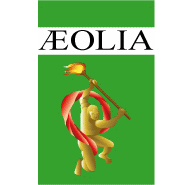Æolia’s History
The main dining room of the Eolia restaurant was once a stable, whereas the Eolia room was a guest room of the two adjacent villas of Costozza, being Villa Da Schio and Villa Trento-Carli.
Just as in the lobby of a grand hotel, there were arrivals in carriages. Horses were rested in stables and guests were welcomed and offered refreshments in the Eolia room.
The name Eolia is derived from Aeolus, god of the wind from greek mythology, as is the Cantina (Jail of the Wind), which holds the frescoes dedicated to Eolia.
These frescoes are from the sixteenth century and are attributed to Zellotti and Fasolo, pupils of The Veronese. They represent the planets of the solar system, the zodiac and four niches depicting the allegories of the four seasons. Note that the moon is also represented, which at the time was regarded as a planet and not a satellite of the earth.
At the centre of the dome, Eolia reigns over all. The marble walls, highlighting geometric figures, cover the remains of frescoes accredited to Mantegna, stolen by Napolean’s armies during their settlement into the area.
The basement is the real heart of Eolia, because of the “ventiducts” (long underground tunnels thousands of metres long). These exploit the state of atmospheric pressure and maintain the air at a constant temperature of between 10 and 14 degrees Celcius throughout the year. The Eolia room and, indeed the entire restaurant, projects a pleasant summer freshness and mild temperatures throughout the winter months.
At the entrance, an ancient inscription reads:
ÆOLUS HIC CLAUSO VENTORUM
CARCERE REGNAT
ÆOLIA
The significance of this being: Aeolus (king of the wind) is locked away in this prison and continues to reign.
Infact, by opening the door, the wind is released amongst the distinguished guests visiting Eolia over the years.
The astronomer Galileo Galilei, who 400 years ago whilst teaching at the universities of Padua and Venice was a guest of the tycoon Trancesco Trento, recalls in his memoirs the rich libations and rheumatisms which took hold of him in Eolia and remained with him for the rest of his life.
Andrea Palladio, the architect, speaks of the ingenious air conditioning system in his treaties.
Mantegna, a painter, was a guest of Francesco Trento, as was Orazio Marinali, the sculptor. The latter subsequently constructed a “sculpture workshop” in the adjacent Villa Da Schio.

